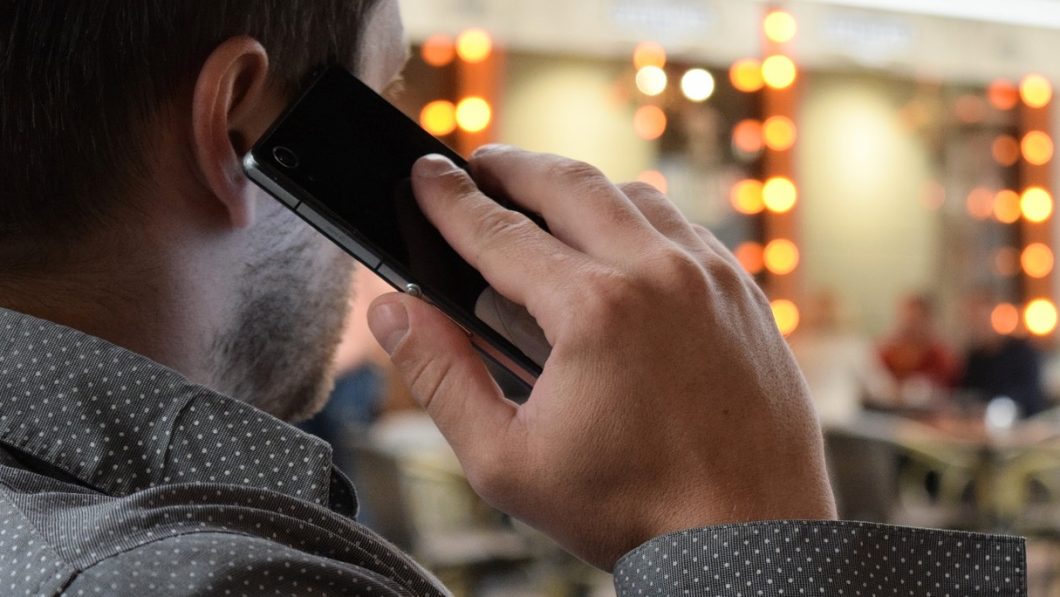In an age where digital noise pervades every corner of our lives, and the constant barrage of information leaves little room for introspection, there’s a growing desire to reconnect with the essence of our experiences. Imagine being able to capture the fleeting sounds of a bustling market in Marrakech, the gentle whispers of leaves in a secluded forest, or the distant lullaby of waves crashing on a remote shore. These auditory snapshots, when woven together, create a rich tapestry of memories that transcend the limits of visual or textual representation. Welcome to the world of Field Sound Memory Collages, where each composition is a gateway to a deeply personal and multisensory journey. Here, the symphony of memories is not just heard, but felt and lived, offering an immersive experience like no other.
Field Sound Memory Collages invite us to engage with our surroundings in a way that is both intimate and expansive. By harnessing the unique power of sound, these collages transport us to places we’ve never been, or back to cherished moments we thought were lost to time. Unlike photographs or written accounts, sounds have an uncanny ability to evoke emotions and memories that are vivid and visceral. The rustle of paper can recall a quiet afternoon spent reading; the distant hum of traffic might bring back a late-night city adventure. As we delve deeper into this art form, we will explore how artists and sound enthusiasts curate these sonic experiences, blending ambient noises, snippets of conversation, and natural soundscapes to create auditory narratives that resonate on a profoundly human level. 🎧
In this exploration, we’ll uncover the history and evolution of sound collages, tracing their origins from early experimental compositions to their current status as a celebrated art form. We’ll discuss the techniques and technologies that make it possible to capture and manipulate sound in innovative ways, enabling creators to craft intricate aural landscapes. Additionally, we’ll delve into the psychological impact of sound on memory and emotion, examining how our brains process auditory stimuli and why certain sounds have the power to transport us instantly to another time and place. By the end of our journey, you’ll gain a deeper appreciation for the artistry involved in crafting these collages and perhaps be inspired to embark on your own auditory adventure. Join us as we immerse ourselves in the symphony of memories, and discover the world anew through the universal language of sound. 🌍✨
The Art and Science of Field Sound Memory Collages
In the realm of audio art, field sound memory collages have emerged as an innovative practice that blends the art of sound recording with the science of memory retention. This form of auditory expression allows artists to capture, manipulate, and combine soundscapes to evoke emotions, narrate stories, and even prompt memory recollection. The process typically involves the collection of natural and ambient sounds from various environments, which are then intricately layered to form a cohesive auditory tapestry. Such compositions not only entertain but also immerse the listener into a symphony of memories and experiences. Whether it’s the rustling of leaves, distant chatter of a crowd, or the gentle ebb and flow of the ocean, these sounds carry the listener through a multisensory journey that is both personal and universal.
Sound memory collages are crafted with the intent to trigger the senses and connect individuals with specific moments in time. The ability to record and reproduce sounds from the environment allows artists to create unique soundscapes that can transport listeners back to cherished moments or evoke new imaginative experiences. By understanding the science of how sounds are linked to memory and emotion, artists can design compositions that resonate deeply with the human psyche. The careful layering of sounds within a collage can mimic the way memories are stored and recalled, making each listening experience a unique auditory journey. To explore more about how sound influences memory, watch this insightful video on the psychology of sound by Psychology Insider.
Furthermore, the accessibility of technology has democratized the creation of sound memory collages, enabling enthusiasts and professionals alike to delve into this art form. With basic recording equipment and software, anyone can capture field sounds and create their own sonic compositions. As a result, sound collages have found applications beyond art, serving as therapeutic tools in cognitive therapies and mindfulness practices. They are used to aid relaxation, enhance concentration, and even stimulate creativity. The expansive potential of sound memory collages continues to grow as more individuals explore its possibilities, making it a fascinating field of study and creation.
Techniques for Creating Field Sound Memory Collages
The creation of field sound memory collages involves a combination of technical skills and artistic intuition. At its core, the process begins with field recording, which requires an understanding of acoustics and the environment. Artists often scout locations for interesting soundscapes, utilizing a variety of recording devices to capture high-quality audio. These sounds are then meticulously edited and arranged to form a cohesive narrative or emotional journey. The layering technique is crucial in this process, as it allows for the creation of depth and texture within the soundscape. Different layers can represent various aspects of a memory, from background ambiance to focal sounds that trigger specific emotions.
Once the raw sounds are collected, the editing phase commences, where artists use digital audio workstations (DAWs) to manipulate and arrange the sounds. This stage is akin to painting with sound, where various audio effects and techniques are employed to enhance the composition. Artists may use equalization to balance frequencies, reverb to add spatial depth, or pitch shifting to create surreal soundscapes. This meticulous process allows for the crafting of a final product that is both technically proficient and emotionally evocative. Below is a comparison of some popular DAWs used in sound collage creation:
| Software | Features | Price Range |
|---|---|---|
| Ableton Live | Real-time sound processing, intuitive interface | $$$ |
| Pro Tools | Industry standard, extensive plugin support | $$$$ |
| FL Studio | Beginner-friendly, lifetime free updates | $$ |
For those interested in starting their journey into field sound memory collages, watch this beginner’s guide on field recording techniques by Sound Enthusiast. It provides a practical introduction to capturing and editing sounds, making it a valuable resource for aspiring sound artists.
Applications and Impact of Field Sound Memory Collages
Field sound memory collages have found a variety of applications across different domains, demonstrating their versatility and impact. In the realm of art, these collages offer a novel medium for expression, allowing artists to explore complex themes and emotions through sound. They can be experienced as standalone pieces, integrated into multimedia installations, or used as soundtracks for visual media. The immersive quality of these collages enables them to transcend traditional art forms, engaging audiences in a multisensory dialogue.
Beyond the arts, sound memory collages have gained recognition in therapeutic settings, where they are utilized as tools for healing and mental well-being. The ability of sound to evoke memories and emotions makes it a powerful medium for therapy, particularly in treatments involving stress reduction and memory enhancement. Soundscapes can be crafted to induce relaxation or stimulate cognitive function, aiding in therapies for conditions such as anxiety, depression, and Alzheimer’s disease. These therapeutic applications highlight the profound connection between sound, memory, and emotion, offering new avenues for healing.
Educational institutions have also begun to incorporate sound memory collages into curricula, recognizing their potential to enhance learning experiences. By engaging students in the creation of soundscapes, educators can foster creativity, improve listening skills, and deepen understanding of acoustic environments. Sound collages can be used as educational tools to explore topics such as history, geography, and cultural studies, providing students with a tangible connection to the subject matter. The table below outlines some of the key benefits of integrating sound memory collages into education:
| Benefit | Description |
|---|---|
| Enhanced Creativity | Encourages artistic expression and innovation |
| Improved Listening Skills | Develops the ability to discern and analyze sounds |
| Multisensory Engagement | Provides a holistic learning experience |
In conclusion, the exploration of Field Sound Memory Collages offers a profound and transformative experience that transcends traditional auditory engagement. This innovative art form, which seamlessly blends elements of sound, memory, and emotion, provides an unparalleled multisensory journey that enriches our understanding of personal and collective histories. By immersing ourselves in these symphonies of memories, we unlock the potential to reconnect with past experiences, fostering a deeper sense of self-awareness and emotional resonance.
Throughout this article, we’ve delved into the intricate process of creating sound memory collages, highlighting the artistic techniques and technologies employed by practitioners in this field. We’ve examined how these auditory landscapes are meticulously crafted, layering diverse soundscapes that evoke powerful memories and emotions. The role of technology, particularly advancements in sound recording and editing, has been instrumental in enabling artists to capture and manipulate sounds with precision and creativity, thus expanding the boundaries of this art form.
Moreover, we’ve discussed the psychological and emotional impact of sound memory collages, emphasizing their capacity to trigger vivid recollections and elicit profound emotional responses. This art form engages the listener’s imagination, transporting them to different times and places, and allowing for a personalized and introspective journey. The multisensory nature of these collages enhances the listener’s ability to connect with their own memories, creating a unique and immersive experience that is both cathartic and enlightening.
The cultural significance of sound memory collages cannot be overstated. They serve as a medium for preserving and sharing oral histories, capturing the essence of diverse cultures, and fostering cross-cultural understanding. By engaging with these collages, individuals can gain insight into the experiences and perspectives of others, promoting empathy and social cohesion. This art form thus plays a crucial role in the preservation of intangible cultural heritage, ensuring that the sounds of our past continue to resonate with future generations.
As we reflect on the myriad benefits of engaging with Field Sound Memory Collages, it becomes evident that this art form holds immense potential for personal growth and societal impact. Whether experienced in a gallery setting, through digital platforms, or as part of therapeutic practices, sound memory collages invite us to explore the depths of our consciousness and embrace the richness of our auditory environment.
In an increasingly fast-paced and visually dominated world, the practice of active listening and auditory engagement offers a much-needed respite, encouraging mindfulness and presence. By tuning into the subtle nuances of sound, we cultivate a deeper appreciation for the world around us and the myriad stories it holds. This heightened awareness not only enriches our personal lives but also fosters a more empathetic and interconnected society.
As you ponder the insights gained from this exploration, we encourage you to engage with sound memory collages in your own life. Whether by creating your own auditory landscapes, participating in workshops, or simply taking a moment to listen more intently to the sounds that surround you, there are countless ways to incorporate this practice into your daily routine. By doing so, you open yourself up to a world of sensory richness and emotional depth, unlocking new avenues for self-discovery and creative expression.
We invite you to share your experiences and reflections on this topic. How have sound memory collages impacted your perception of memories and emotions? What stories and sounds have resonated with you the most? Your insights and contributions are invaluable in enriching the dialogue surrounding this art form and its significance in our lives.
In closing, let us celebrate the power of sound as a vessel for memory and emotion, and embrace the transformative potential of Field Sound Memory Collages. Together, we can foster a deeper appreciation for the auditory tapestry of our world, one memory at a time. 🌍🎶
Please feel free to explore further resources on this captivating topic by visiting reputable sources such as the International Sound & Music Foundation or the , where you can find additional insights and inspiration. Thank you for embarking on this journey with us, and may the symphony of memories continue to inspire and enrich your life.
Toni Santos is a sensory storyteller and soundscape artisan whose work explores the forgotten language of the Earth through acoustic ecology storytelling. With a deep reverence for the natural world’s sonic textures, Toni crafts narratives that awaken our ears to the subtle music of forests, winds, waters, and wild silence.
His creative journey is rooted in a desire to preserve and interpret the acoustic heritage of environments, both ancient and fragile. From the echo of birdsong in a disappearing jungle to the resonance of stones in sacred landscapes, Toni’s stories reflect the memory held in sound—often overlooked, yet deeply felt.
With a background in environmental aesthetics and sonic design, Toni blends field recordings, visual symbolism, and poetic insight to create immersive experiences that honor the sonic soul of nature. His work does more than document; it invites listeners to re-tune themselves to the rhythms of life that still pulse beneath modern noise.
As the voice behind Vizovex, Toni shares sound-based studies, ambient narratives, and reflective content that help others reconnect with how sound shapes memory, meaning, and place.
His work is a tribute to:
The lost soundscapes of vanishing ecosystems
The role of natural acoustics in cultural and emotional memory
The healing potential of listening deeply to the world
Whether you’re an artist, an ecologist, or someone drawn to the quiet power of listening, Toni invites you into a space where every rustle, ripple, and resonance becomes a story—one note, one place, one heartbeat at a time.




